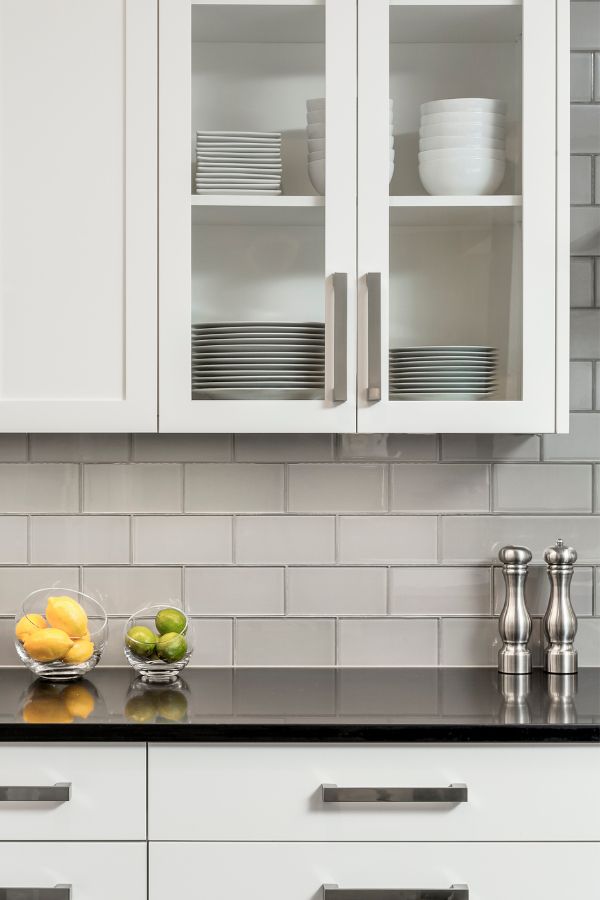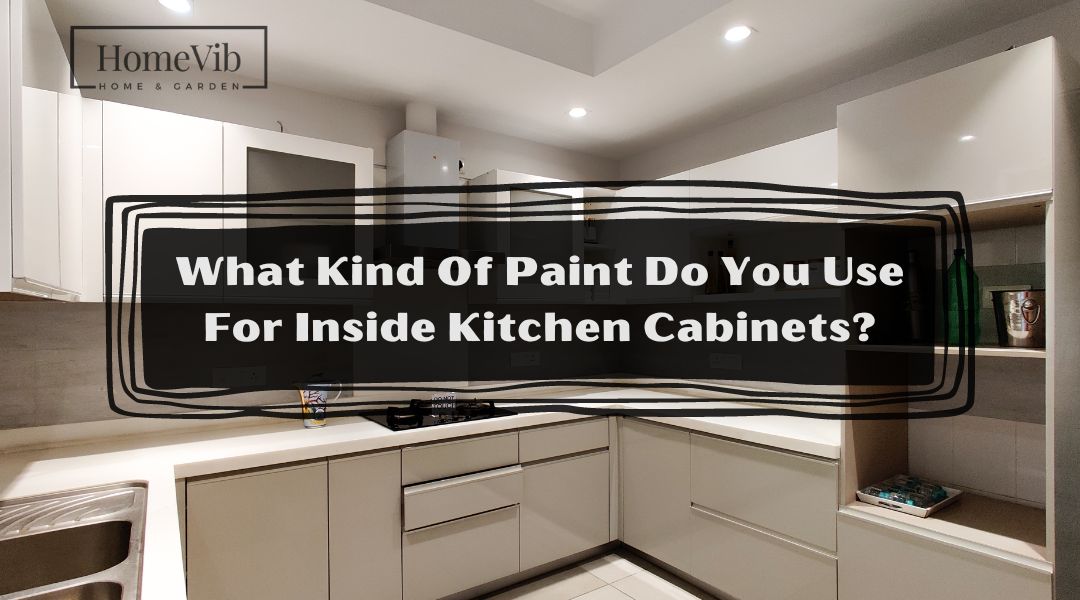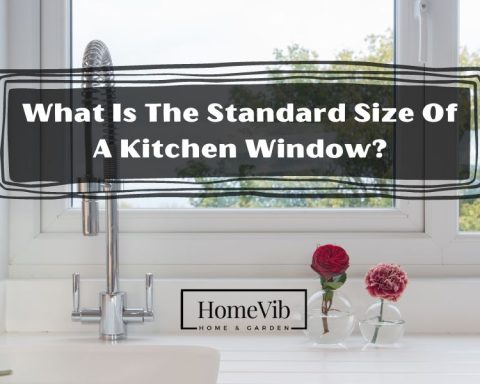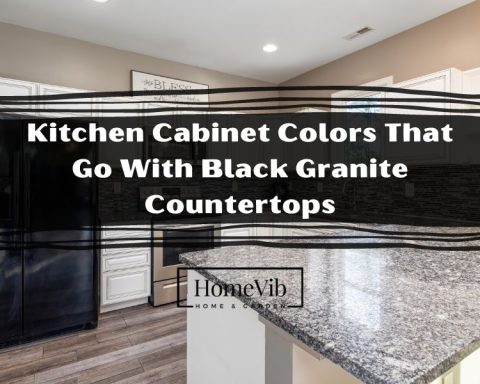A complete remodel of your kitchen can be expensive and impractical, especially if you don’t have enough budget. The good news, however, is that there is a more affordable option than remodeling your kitchen.
Losing the kitchen cabinet door and painting its inside can give the area a new look and improve the space without breaking the bank.
However, the wood of the cabinet is delicate if they are old. And choosing the wrong paint solution could damage the wood.
In addition, each type of paint produces unique aesthetics to the wood that suits the unique preferences of the homeowners as well.
Thus, what kind of paint is appropriate for the kitchen cabinet’s interiors?
Three of the best kinds of paint you have to consider are latex, alkyd, and oil-based paints. Each of them has advantages and disadvantages that could either produce the result you like or ruin the interiors of the kitchen cabinet.
Aside from the specifications of each type of paint, I will also share with you five of the popular colors that will enhance the style and space of your kitchen.
Should You Paint The Inside Of The Kitchen Cabinets?

It’s impractical to paint the insides of the cabinet if they have doors. It is more expensive and requires additional maintenance.
Furthermore, the interiors of the cabinets are not visible once you close the doors. It might not seem much, but the cabinets’ interiors use about one gallon of primer and paint, depending on the application, size, and number of cabinets.
You must also consider your time and effort in painting the kitchen cabinet’s interiors. And if you are hiring a professional to do the job, you also have to pay for the labor cost it incurs.
However, it’s a different story if the cabinets are just shelves or the cabinets use glass doors that showcase their interiors and anything inside it.
Painting the interiors of the kitchen cabinets is an excellent idea if it doesn’t have any doors or using glass doors.
Depending on the colors of the paint and the arrangement of displays or kitchen essentials inside the cabinet, it can significantly improve the area’s aesthetics and enhance the space.
How To Decide Whether Or Not To Paint Inside Kitchen Cabinets?
If the cabinets have doors, you can paint the interiors. But again, you have to consider the cost and time of painting the insides of the cabinets.
But you don’t have to paint them because they are impractical unless you and your guest can see and appreciate the cabinet’s interiors.
But if the kitchen cabinets do not have doors or are transparent, then painting the interiors with your preferred colors will greatly boost the style and space of your kitchen.
What Kind Of Paint Do You Use For Inside Kitchen Cabinets?
You can apply three kinds of paints inside your kitchen cabinets, including the following.
Oil-Based Paints
Oil-based paints are most commonly used in furniture because of their beautiful lustrous finish. It is also very resilient and easy to clean.
If an oily or sticky substance interacts with the wood’s surface, you can easily wipe them off using a proper cleaning solution and a clean rag.
However, oil-based paints take hours before they are fully dry. On average, it takes approximately 16 hours to dry, given that the room where it is curing has proper air circulation.
In addition, the paint obtains a yellowish characteristic as soon as it starts to succumb to the effects of wear and tear.
Another important fact you must note about oil-based paints is that some brands may contain high levels of VOC.
They are chemical compounds that cause health implications when frequently introduced to our system. And it gets to our bodies via an enclosed environment where we store our kitchen utensils and spices.
Some prominent examples of health implications are dizziness, shortness of breath, and irritation to the eyes, nose, and throat.
The best use for oil-based paints is if you are not storing any food or food containers in them.
Pros of Oil-Based Paints:
- Highly tolerant against scrubbing and cleaning solutions
- Beautiful lustrous finish and resilient finish
- It blends with wood grain perfectly
Cons of Oil-Based Paints:
- It takes time to dry
- It becomes yellow over time
- Some brands of oil-based paints have high levels of VOC
Latex or Water-Based Paints
Latex paints are the opposite of oil-based paints regarding less VOCs, easy application, and drying quickly.
It also produces an elegant glow that makes them excellent on the ceiling and walls aside from the cabinet’s interiors.
If oil-based paints take time to dry, latex paints take time to prepare. And this is because if you cannot prepare them properly, a grainy and uneven texture tends to form on their surface.
Pros of Latex Paints:
- It dries quickly
- Low levels of VOC
- It has a glossy finish similar to oil-based paints
Cons of Latex Paints:
- A grainy finish tends to form if not prepared properly
- You have to be extra careful when using scrubs or harsh chemical solutions because they might peel the paint off
Alkyd Paints
Alkyd Enamel Interior/Exterior Paint
Alkyd is a water-based paint that has an enamel and semi-glossy finish. It has a consistency similar to oil-based paints but doesn’t have any oil compounds in it.
But its advantage over latex and oil-based paints is that the finish is tougher and more resilient to cleaning solutions and scrubbing. And it is still durable even without a second layer of coating.
It is also easy to prepare and dries fast. Alkyd is self-leveling, meaning it doesn’t form grainy or uneven consistency.
However, Alkyd’s only danger is its high levels of VOCs because the fumes from the paint could lead to dizziness and light-headedness.
In addition, you have to wear protective gear for the eyes and nose if you are working with this type of paint.
Pros of Alkyd Paint:
- It has a semi-gloss and smooth finish
- It has a thick coat even without a second layer of coating
- It is durable against harsh cleaning solutions and scrubbing
Cons of Alkyd Paint:
- Although Alkyd is water-based, it has high levels of VOCs
- The paint could get brittle and peel off over time
What Should I Paint The Inside Of My Cabinets With?
Latex paints are best if you store foods and containers that handle foods inside the cabinets. They are safer for you and your family’s health because they have fewer VOCs.
On the other hand, you can use oil-based and alkyd paints if you only store figurines, decorative plates, and other displays inside the cabinets.
In addition, these two types of paints have more gloss and even finish that is perfect for such purposes.
Best Colors To Paint Inside Of A Kitchen Cabinet
Aside from the kind of paint, another important factor is the color that suits the cabinet and interior design of the kitchen.
If you are unsure which color to choose, the following are the popular varieties you can consider.
1. White
You can never go wrong with a white kitchen cabinet interior. And this is because it is the most common option. After all, they are neutral and somewhat balance the surrounding colors.
The solid white color also draws light, which makes the displays more prominent.
Thus, it is the perfect option if you are going to the kitchen cabinet for figurines and other displays. They also work perfectly for kitchen utensils you use only for special occasions.
2. Green
The color green and nature are always synonymous with each other. It is an excellent color for a kitchen style that draws inspiration from nature.
Green has a soothing effect that makes the room a relaxing area.
You can paint the interiors of the kitchen cabinet with the same colors as its surrounding. Or you can use a different shade of green as long as it complements the kitchen’s color scheme.
3. Turquoise
Turquoise is a variety of blue with undertones of green with a rich and deep texture. The green creates the deep tone of Turquoise, but it is still lighter than the regular blue color.
Turquoise has a balanced shade that makes the cabinets’ displays prominent, and it is not bright enough to warm the kitchen.
The kitchen should be a place of relaxation and an area where we recharge our bodies with food, which makes Turquoise ideal because it emits calmness and serenity.
4. Yellow
Yellow is not a common option for the interiors of the kitchen cabinet because they attract too much light, reflecting it to the point that it’s no longer comfortable, especially during the daytime.
In any case, it can provide style if you can position it in the right section of the kitchen.
In addition, the warm tone of yellow symbolizes positivity and energy. It is among the ideal paints in a modern kitchen because it adds a touch of elegance and personality to the kitchen.
However, you have to pair the yellow interiors of the cabinet with dark colors to balance its bright tone.
5. Pink
Pink is another uncommon color used in the interiors of the kitchen cabinet. However, it is a popular option for women who want to add a feminine touch to the kitchen.
The soft and bright yet cool tone of the color also emits a positive vibe and calmness. They are also perfect for a minimalist kitchen if you want a color scheme other than the traditional black and white.
Pink is a flexible color that matches most paints with darker tones and some varieties with lighter tones. Its blush texture is vibrant yet soft and not overwhelmingly bright, that’s uncomfortable to the sight.
But the best partner for pink are walls painted with white. Although both have a warm tone, they are neutral and complement each other.
Do You Paint The Inside Of The Cabinets The Same Color As Outside?
You can make the colors of the cabinet’s interiors the same as the exteriors, or you can apply different paints as long as the color combinations are complementary.
Either way, both can boost your kitchen’s style, and it will all depend on your preferences, given that it will provide you with the desired results.
How To Paint The Inside of A Kitchen Cabinet?
The application of paint on the interiors of a kitchen cabinet is simple, and it is the same as with any other furniture.
However, the mechanics are different since you must remove some of the cabinet’s screws and other hardware to reach its interiors.
Therefore, the following are the guidelines for properly painting the kitchen cabinet’s interiors.
Remove Doors and Hardware
First, cover the countertop and other furniture near the cabinets with a sheet or newspaper to protect them from excess paint and other potential damages.
And then, you have to remove the hinges, screws, and bolts connecting the door from the cabinet using either a screwdriver or drill. You must unscrew the hinges slowly and carefully using an electric drill to prevent damaging the wood.
Afterward, keep the doors in safe storage where children won’t reach them because you no longer have to put them back.
Clean Cabinets
Before sanding the interiors of the kitchen cabinet, you have to clean them first to remove dirt and any oil residues. You will need a sponge and a solution of soapy dishwashing liquid to clean the interiors.
Scrub the interiors of the cabinet. And then, thoroughly rinse the soap with water. Let it dry briefly before sanding the surface and applying primers.
Prime Inside Kitchen Cabinets
Water-Based Stain Blocking Primer
Afterward, use 220-grit sandpaper to sand the kitchen cabinet’s interiors before applying any primer. And then dust off the excess.
If the exteriors of the cabinet have different colors from the interiors, then you have to cover the surface with painter’s tape to protect them from the paint and dust.
Prepare the primer and use a roller or regular paint brush to apply the solution to the surface of the cabinet’s interiors. And allow the primer to dry first before applying the paint.
Most brands of primers dry for up to 3 hours, depending on the room temperature and air circulation. Thus, you must ensure the area is properly ventilated while drying the primer.
Paint Inside Kitchen Cabinets
You can now paint the interiors of the cabinet with your preferred color. Use a different roller or paint brush and apply the paint evenly throughout the interiors.
Begin painting from the top corner, and you move forward to the corners and trim. And then move to the smaller section of the cabinet’s interiors.
And then, you have to let the paint dry before you apply a second coat that would strengthen the durability of the paint. The paint will dry depending on the type of paint.
For example, latex paint dries fast, and you only have to wait 1 hour. Oil-based paints dry for about 6 to 8 hours. On the other hand, alkyd paints take time to dry, which is about 16 hours.
Let Cabinets Dry, Then Apply a Second Coat
The application of the second coating is the same as the first coating. However, you have to be sure that the patterns are the same.
For example, you must begin from the top corner and work your way to corners and trims. And then work on the smaller sections of the cabinet’s interiors.
Let Kitchen Cabinets Cure
Before you put your displays inside the kitchen cabinet, let it cure first for at least 24 hours to let the second coating dry completely.














